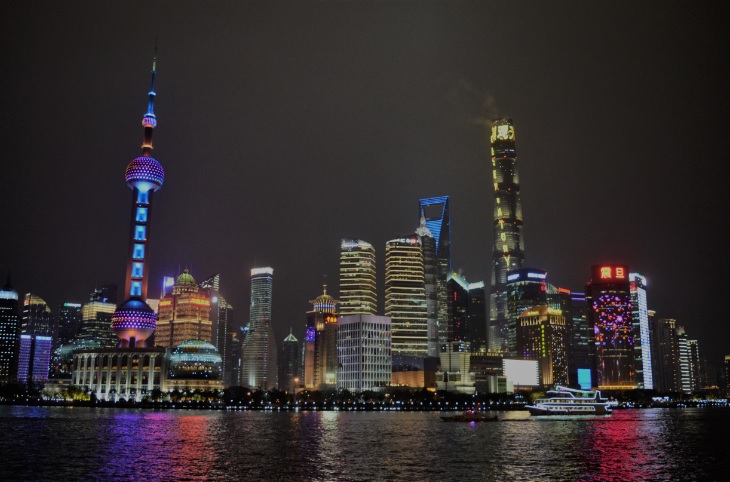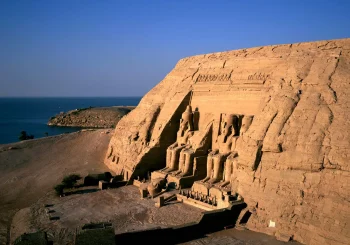
“Just why would you visit China?”
“What’s there to eat besides insects?”
“But it has a horrible track of human rights abuse.”
“I’d rather go to Europe.”
For years, most of my social acquaintances have been reticent about the idea of visiting China, deeming it ‘dangerous, disgusting and boring’ for no obvious reason than what they’ve been told or what they have read about in foreign news outlets.
Although Egypt has a plethora of Chinese restaurants and receives millions of Chinese tourists every year, the common, every-day Egyptian doesn’t know much about China either.
Moreover, films and TV series have barely represented China in a positive way. One example of this is ‘Fool el Seen El Azeem (The Great Beans of China), a 2004 comedy film featuring Mohamed Henedi who goes to China for an international cooking competition only to experience a culture shock as he proceeds to reinforce the most cliché stereotypes about Chinese culture.
On the other hand, the few who understand that the country, home to 34 divisions (including provinces, municipalities and autonomous regions) and, according to 2017 statistics, 1.386 billion people, has plenty to offer often exotify it and Orientalize it to the point of no recognition.
The average traveler goes to China thinking that tourists still ride rickshaws and that China-men wear straw hats, opting to eat rice for breakfast, lunch and dinner all while saluting Maoist posters in the morning.
The truth it, China, particularly Shanghai, is a marvelous destination but not for the reasons most people think.
This article is meant to inspire the average Middle Eastern or Egyptian reader to visit it, bearing in mind how vast the differences are between the Arab and the Asian world.
Go for the joie de vivre
Every couple of kilometers, one can find a park replete with big, looming trees, benches and perpetually chirping birds. The weather tends to be favorable for this kind of urban life feature, but it seems to be a vital part of growing up Chinese: to be surrounded by and spending time in greenery.
It is not unusual to walk by these parks early in the foggy morning and find a group of elderly practicing tai chi. Every neighborhood has a set of public exercise machines that are for the community as well, reinforcing the idea of ‘good health’ and ‘wellness’.

The Chinese, obviously big on exercising, spend most of their commuting time riding bicycles and one can see a plethora of orange, blue and yellow bicycles stationed everywhere in the city. These are company-owned bicycles that a citizen can hop on anywhere after scanning the QR code on the bicycle with their phones to pay for their ride.
Not only does this foster good habits, it also inspires the Chinese to take care of the property as it would be used by anyone in the city at any time.

In traditional Shikumen houses, near downtown, the government plays soft instrumental music which travels lightly through the alleyways and which leaves the residents as well as the street business owners with a hint of a smile all day long.
Obviously, since Shanghai has a reputation for being an international cosmopolitan city, it also spoils the residents and the expats with endless choices for entertainment, with endless nightlife and over 150 museums to visit.
One can spend a full day at the national Shanghai museum, which is for free, perusing ceramic and bronze artifacts. Or, one has the liberty to practice street photography, at large and without constraint, at various areas with interesting architectural landscapes.

I once asked a local photographer whether it was okay for me to take photos in the streets. I thought, like Egypt (considering how strict the Chinese government is reputed to be) there would be heavy police presence and a restriction on photographing, only to be met with laughter and a puzzled expression.
The Chinese, also known for their voracious appetite for flavorful food, are lucky enough to have a country filled with food opportunities everywhere: it is common to see children snacking on tanghulu (hawberries on a stick covered in hardened syrup), while professionals nibble on fresh spinach mantou (steamed buns) on their way to work.
The portions are always small, which is to encourage the idea of ‘small pleasures’ rather than copious, senseless amounts of food one is commonly used to seeing in the Middle East.
Go to experience a culinary den of wonder
While it is true that the Chinese are culinary adventurers, it does not mean that their food is devoid of delicacies and wonderful dishes. Of course, like anywhere in the world, food depends on the geographical area and the ingredients readily available. However, there are fantastic oddities in Shanghai one cannot find anywhere else.

For New Years, thousands queue up to buy sticky purple rice topped with mango and condensed milk as well as various sweets filled with sweetened red bean and sesame pastes. In pharmacies, going back to this idea of health and wellness, one can find strong ginseng tea, odd herbs and honey bee capsules for as much as 5,000 LE.
In Shanghai alone, one can find local food that is the city is known for, such as crab soup dumplings (you slurp the soup with a straw, but beware if you do not eat pork as both meats are mixed).
The foodie city is also a home to spiced dishes from all over the nation, such as from the Sichuan and Yunan provinces, including dishes of jasmine flower pods mixed with egg and extremely red duck meat lathered with spices.
I’ve eaten forms of mushrooms I never thought existed such as ones that looked like loofas and beansprouts, as well as white strawberries and extremely sweet purple mangosteen.

Walking through the city, just in the streets or even at Carrefour, there are thousands of eels as big as torsos and entire geese that are salted and hung in the air to dry.
That is not to say that the Chinese do not eat cereal, sushi or pizzas; just like anywhere else, the city is succumbing to globalized food culture, but it is amusing nonetheless to find grilled pig hooves as a snack or to hear about dog ‘noodle’ dishes from your Chinese friends.
Go to be dazzled by the un-relentless technological progress
Shanghai, along with Beijing and Guangzhou, is most notably the most developed city in China. One would have a hard time believing that there could be a difference in wealth in the vast country if one solely visited this financial hub of a city.
The most startling thing about it is how cashless the society is. Anyone with a smart phone has a wallet on their WeChat account (one of the few social media/ messaging apps allowed in China) which they use for just about anything: from paying at restaurants, to going on taxi rides, to giving donations at famous temples. The most notable ones in Shanghai are Jing’an temple to the jade temple which are both homes to extremely large buddhas in bronze and white jade.

Moreover, the city is laden with skyscrapers (while most older houses tend to be around two stories, the average number of floors for skyscrapers tends to be around 45 floors) and a killer skyline near the waterfront area of central Shanghai, the Bund.

As a major shipping and trading city, Shanghai is one of the most coveted cities in China for foreigners and locals alike. It grew in importance in the 19th century due to its strategic location, rendering it ideal for port location and, consequently, commercial potential.
It vastly exceeds what the average person pictures when imagining China, and although it is not representative of the whole nation, as no city actually tends to be, it is a prime example of progress when there is potential.






Comments (2)
[…] Click To Read Full Article […]
[…] Source link […]